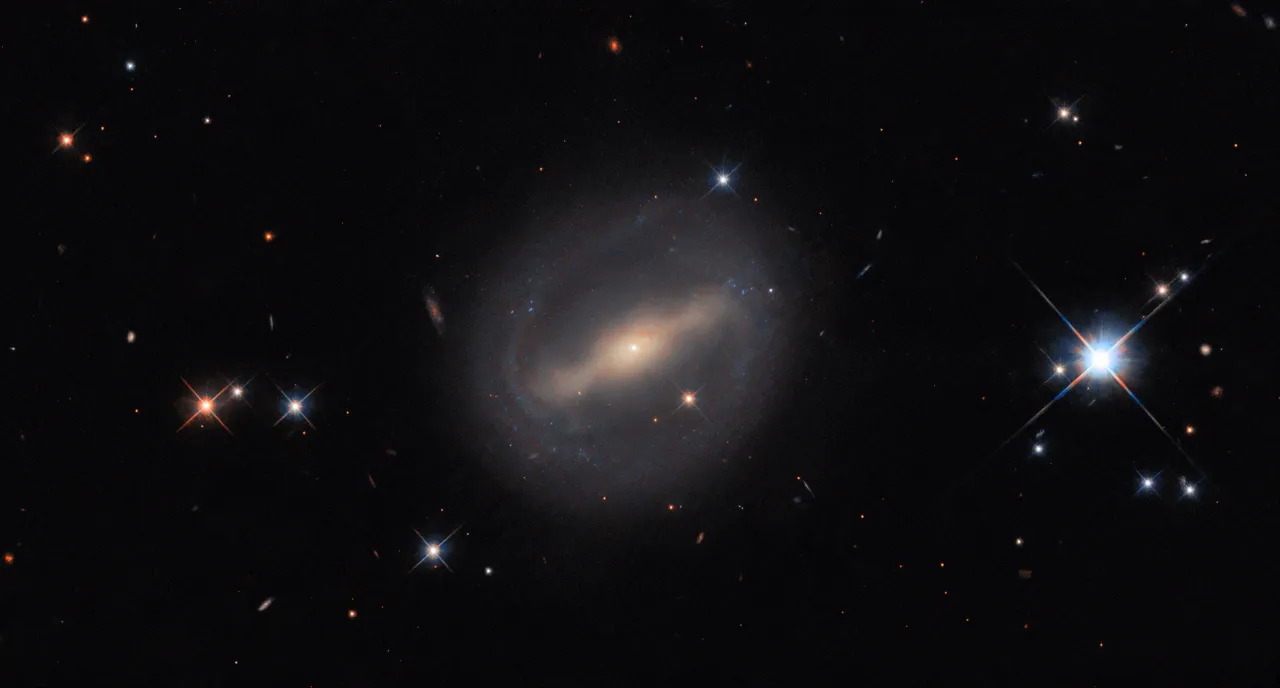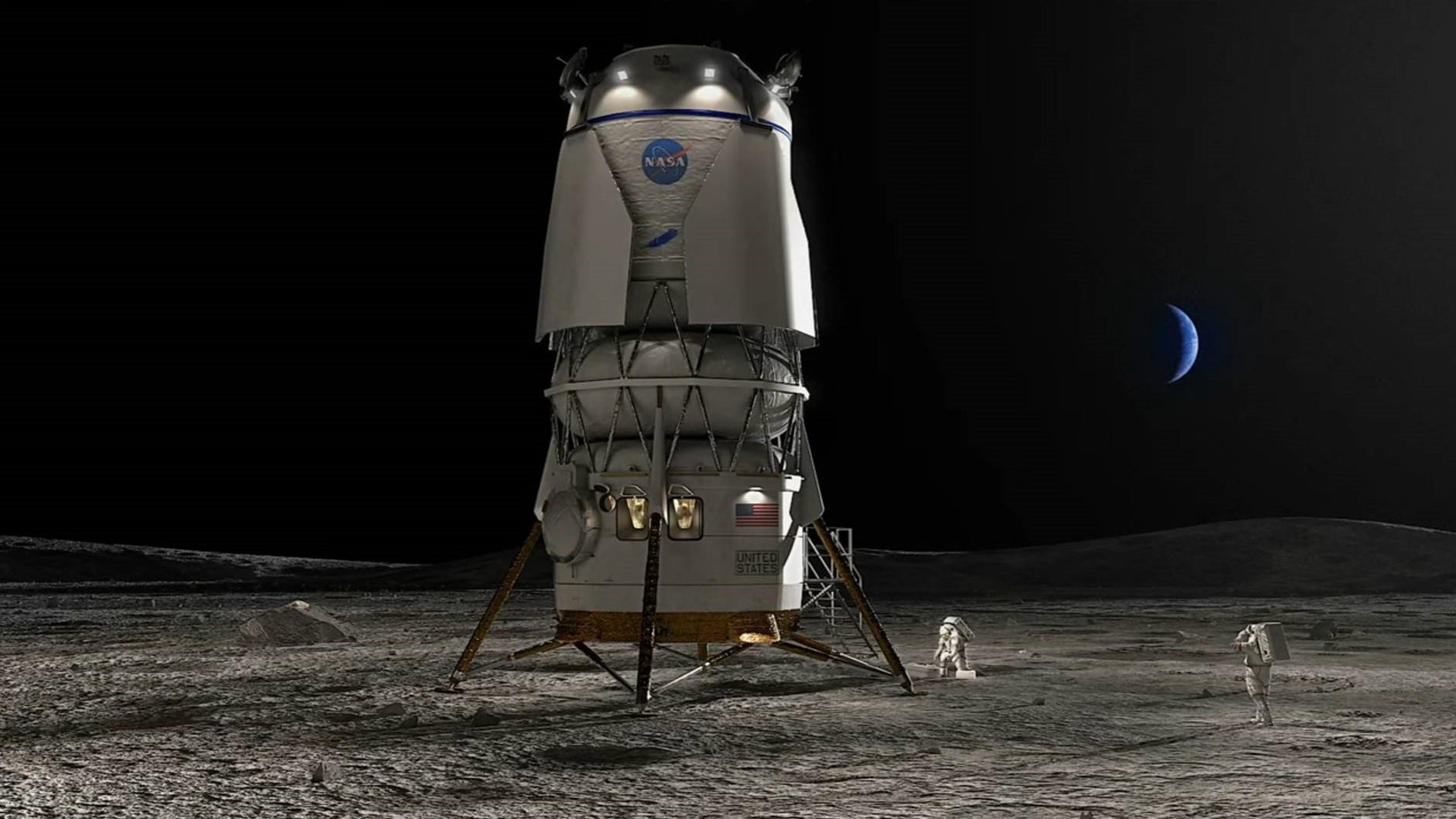New Hubble Telescope image captures peculiar ring-shaped galaxy
The barred spiral galaxy MCG+07-07-072 has thin, loosely wound arms emerging from the ends of its barred core, creating a rather unusual ring shape.

A galaxy's outstretched arms form a nearly perfect circle around its central disk in a striking new image from the Hubble Space Telescope.
The barred spiral galaxy, formally known as MCG+07-07-072, is located in the Perseus Cluster about 320 million light-years from Earth. The galaxy has thin, loosely wound arms emerging from the ends of its barred core, creating a rather unusual shape, according to a statement from NASA.
"Rings in galaxies come in quite a few forms, from merely uncommon, to rare and scientifically important!," NASA officials said in the statement.
Related: The best Hubble Space Telescope images of all time!
MCG+07-07-072 is referred to as a barred spiral galaxy due to its central bar-shaped structure that's composed of stars. However, its official classification is an SBc(r) galaxy, in reference to its spiral arms that stretch from its barred core completing only a half-turn around the galaxy. "The classification of 'ring galaxy' is reserved for peculiar galaxies with a round ring of gas and star formation, much like spiral arms look, but completely disconnected from the galactic nucleus — or even without any visible nucleus!" NASA officials said.
Ring galaxies are thought to form when two or more galaxies collide. For example, when a smaller galaxy passes through the center of a larger galaxy, the resulting gravitational disruption would cause a wave of star formation to move through the larger galaxy and push its arms outward, much like ripples created when a rock is dropped into water.
It's also possible a galaxy's ring-shaped appearance is the result of a phenomena known as gravitational lensing, whereby a massive foreground object warps the space around it, distorting the image of a background object into rings, arcs or multiple points of light.
Get the Space.com Newsletter
Breaking space news, the latest updates on rocket launches, skywatching events and more!
"Ring-shaped images, called Einstein rings, only form when the lensing and imaged galaxies are perfectly aligned," NASA officials said in the statement.
The new Hubble image, which was shared on Aug. 16, also captures a number of stars with prominent diffraction spikes. These stars appear bigger in the image because they lie in the foreground, much closer to Earth than MCG+07-07-072.
Join our Space Forums to keep talking space on the latest missions, night sky and more! And if you have a news tip, correction or comment, let us know at: community@space.com.

Samantha Mathewson joined Space.com as an intern in the summer of 2016. She received a B.A. in Journalism and Environmental Science at the University of New Haven, in Connecticut. Previously, her work has been published in Nature World News. When not writing or reading about science, Samantha enjoys traveling to new places and taking photos! You can follow her on Twitter @Sam_Ashley13.
-
Harmonograms A non-mainstream explanation for the formation of galactic arms, bars and rings based upon simple harmonic motion -Reply
I would submit that “grand design spiral galaxies” are formed when two large galaxies* merge and the combined motions of the two independent galactic masses “draw” a vibration figure similar to that which is created by a two-pendulum harmonograph (pendulum drawing machine consisting of two independent pendulums which rotate in infinite planes) set at a 1:1 ratio and the initial pendulum motion is counter-current (one pendulum clockwise motion and the second counter-clockwise). The physics demonstrated by a simple pendulum toy from the 1800’s may reveal insights into large and complex galactic structures.
Furthermore, subsequent galactic mergers overwrite a galaxy with additional pairs of spiral arms (galactic arms are always created in pairs, even though they are sometimes difficult to discern). The two-pendulum harmonograph drawing machine, set to a 1:1 ratio, mathematically models many different configurations of galactic spirals which we can observe in the universe.
The harmonograph mathematically demonstrates other interesting galactic structures and demonstrates with simple pendulum motion how a grand design spiral galaxy, if it remains unperturbed by subsequent large mergers for a long enough period of time, can slowly undergo a phase change and the motion becomes concurrent, which first creates a prominent galactic bar and ultimately forms a ring galaxy structure (Hoag’s object, for example). Large galactic structures are harmonic vibrations created by the independent motions of colliding galactic masses!
If this hypothesis is valid, then spiral galaxies naturally go through a phase change and transition into barred and finally ring galaxies if they are isolated from frequent mergers. There are also other factors to consider such as: Are the masses of the two merging galaxies roughly equal, do the central SMBH’s find stable orbits or merge, and collision angle and velocity considerations.
* Can a galactic mass be equivalent to a pendulum bob? A simple pendulum consists of a pivot point, rod and a bob, the pivot point of a galactic mass (bob) would be the big bang event and the rod would be the intervening spacetime, which tends to support the big bang model for the origin of the universe because if galactic masses had different origin points, collisions would produce chaos instead of the harmonic vibrations created by 1:1 pendulum motion.
